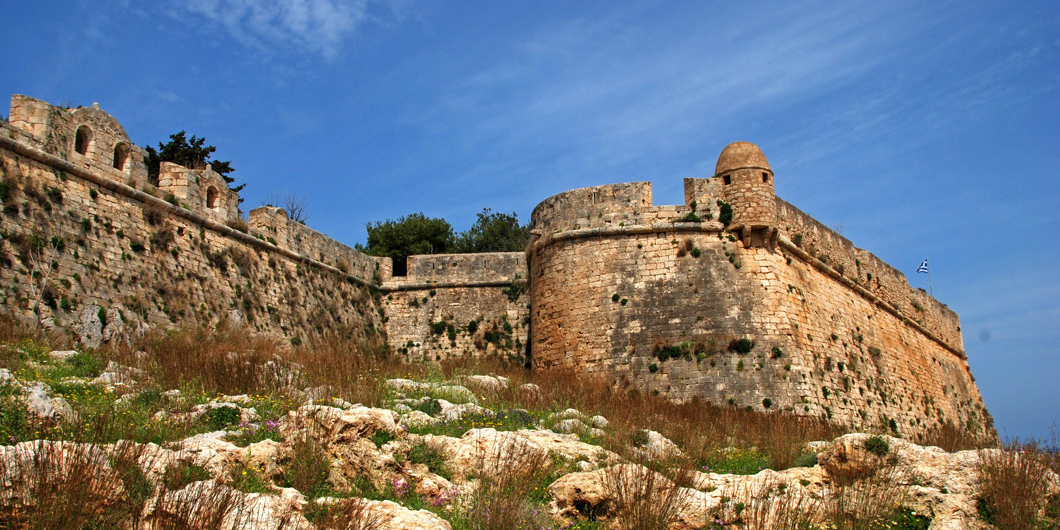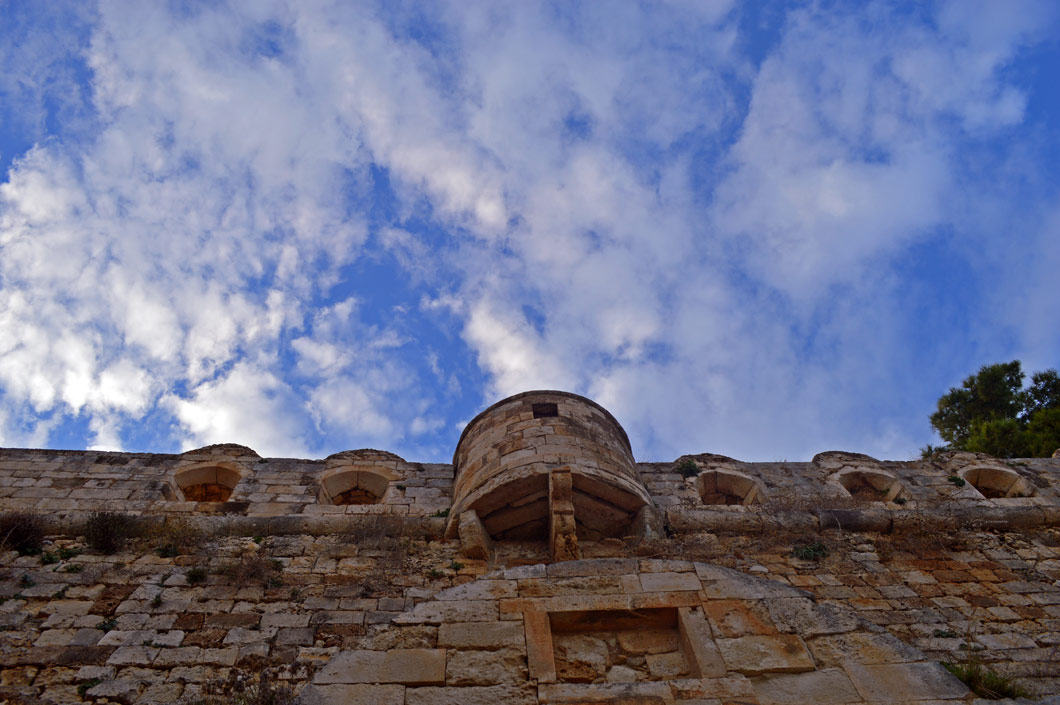An imposing fortress, which overlooks the city of Rethymnon from the rocky hill of Paleokastro.
It is very possible that in Antiquity, before the medieval Fortezza was built, the acropolis of Ancient Rithymna and the temple of Artemis Rokkea existed in the area.

The building of the fortress that survives today was decided upon for defensive reasons, two years after the destruction of the city by the pirate Uluj Ali (1571). The construction works were begun by the rector Alvise Lando and his master craftsman Yiannis Skordilis, according to designs by Sforza Palavicini; they were completed in 1580, after 76.800 mandatory days of forced labour, of residents of the whole Prefecture, resulting to a building of an irregular polygonal shape, with four bastions and three corners.
As it was seen later, the Fortezza was proved to be ineffective for defence, because it lacked a moat, and because of the fact that the area south of it was built up. However, the interior was quite well-planned.
A square with the Cathedral of Agios Nikolaos (which, during the Turkish rule, was turned into the Ibrahim Khan Mosque, after the addition of a dome and a minaret), and the rector’s residence occupied the central area of the fortress.
Parts of this residence complex survive today; however, its former glory is no longer obvious: According to documents of the time, it had two stories, 49 doors, 81 windows, two staircases and balconies and its design followed the Renaissance palazzo pattern.
Two powder magazines were to be found inside the Fortezza, strategically located on the northern, more secure side, where the walls were reinforced. There were also several cisterns, a residence for the Councilors, a building which is believed to be an Episcopate (Bishop’s residence), storage rooms and two churches (AgIa EkaterIni and Agios Theodoros), as well as private houses. The central gate was on the eastern side, between the bastions of Agios Loukas and Agios Nikolaos. On the outer side of the entrance portico there was the Lion of St. Mark, one of the five that adorned the fortress in total.

The Fortezza fell ingloriously to the Turkish conquerors on November 4, 1646. Few ruins of the Venetian buildings, walls, cisterns and the mosque (Agios Nikolaos church) can be seen today. All buildings that survived to reach the 20th century were destroyed by the Germans, who placed machine guns on the north-eastern side of the fortress and also held many hostages here.
The Fortezza today continues to look over the city and its shoreline from high above, and hosts important cultural events every summer, at the Erofili Theatre.










